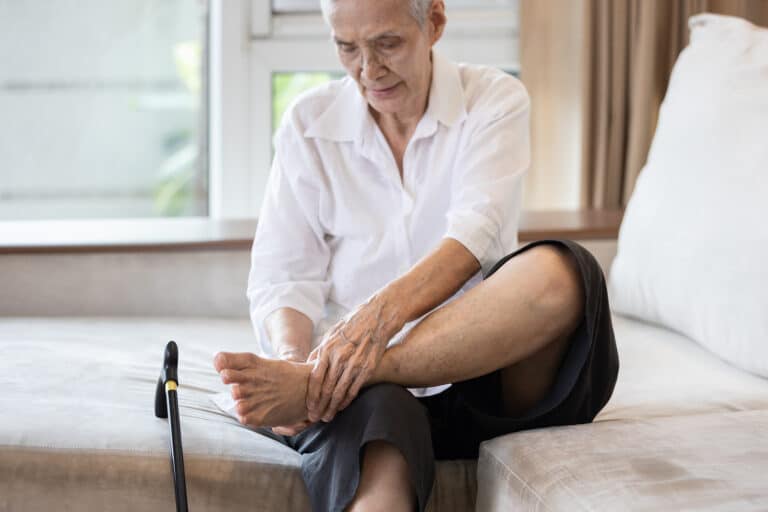It’s not uncommon for individuals with diabetes to develop foot skin problems. That’s because diabetes often changes the skin that surrounds the foot. Diabetes can lead to nerve damage, which in turn affects the body’s ability to control the oil and moisture in the foot, leading to dry heels. If these areas are not taken care of regularly with the help of personal care at home providers, they can easily open and lead to infections in the feet. Unfortunately, since diabetes leads to nerve damage, your loved one may not even feel it or see it until it’s too late.
Why Foot Care is Difficult for the Elderly
While your loved one may understand the importance of maintaining good foot health, she might not be able to physically care for her feet. One hurdle she may struggle with is a lack of flexibility or mobility. If your loved one is overweight or lacks the flexibility needed to bend over, she might find it nearly impossible to apply lotion or review her feet for any areas that need immediate attention.
Poor eyesight can also make spotting trouble areas more difficult. If your loved one has diabetes but struggles to care for her feet properly, you might want to consider hiring a professional who provides personal care at home services for the elderly.
Five Tips for Preventing Cracked Heels
Some of these tips your loved one will be able to do herself, but for others, she might require the assistance of personal care at home provider.
Wear Proper Shoes and Socks
Make sure shoes fit properly and, when possible, are made of natural materials that allow breathing and don’t make her feet sweat. Socks should be moisture-wicking. When at home, especially a home heated with dry air, keeping feet covered with socks (with non-slip bottoms) can help protect the air from drying them out.
Keep Baths and Showers Short
Soaking the feet can do more harm than good as it can lead to drying out of the feet. When finished bathing, your loved one should gently blot her feet dry to prevent the towel from catching on any dry skin and ripping open a sore.
Moisturize Within Five Minutes of Bathing
Look for creams specifically created for heel care. They should contain 10-25% alpha hydroxy acid or salicylic acid. Apply it while the foot is damp to lock in moisture if possible.
If reaching her heels is difficult, have your loved one wait until her personal care at home attendant arrives each day to apply lotion to all areas of the foot, except between the toes.
Note that putting lotion between the toes can increase the moisture in that area and lead to infection.
Protect Cracked Heals
If the skin on the heel is already cracked, protect it during the day by applying a liquid bandage over the cracks. This will keep dirt and bacteria out of the cracks and provide relief from pain.
Check Heels Daily
Your loved one should check to make sure no cracks are beginning to form by running both hands over the heels and looking at the heel. If she is unable to fully see or reach her heels for a check, her personal care at home attendant can review her feet with each visit to ensure there are no injuries.
With the help of family and personal care at home caregivers, these steps should help cracked heels heal and prevent more cracks from developing.
If you or an aging loved one needs Personal Care at Home in Elk Grove, CA, contact A Better Living Home Care today (916) 514-7006
- Kitchen Tools That Make Eating Easier for Seniors - April 25, 2025
- Helping Seniors Reduce Health Anxiety - April 18, 2025
- Why Should Seniors Consider Adding Soy to Their Diets? - April 7, 2025


